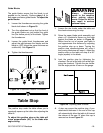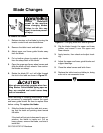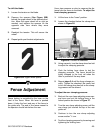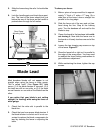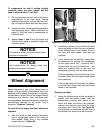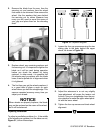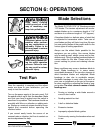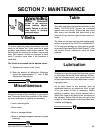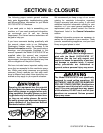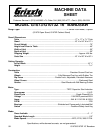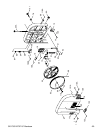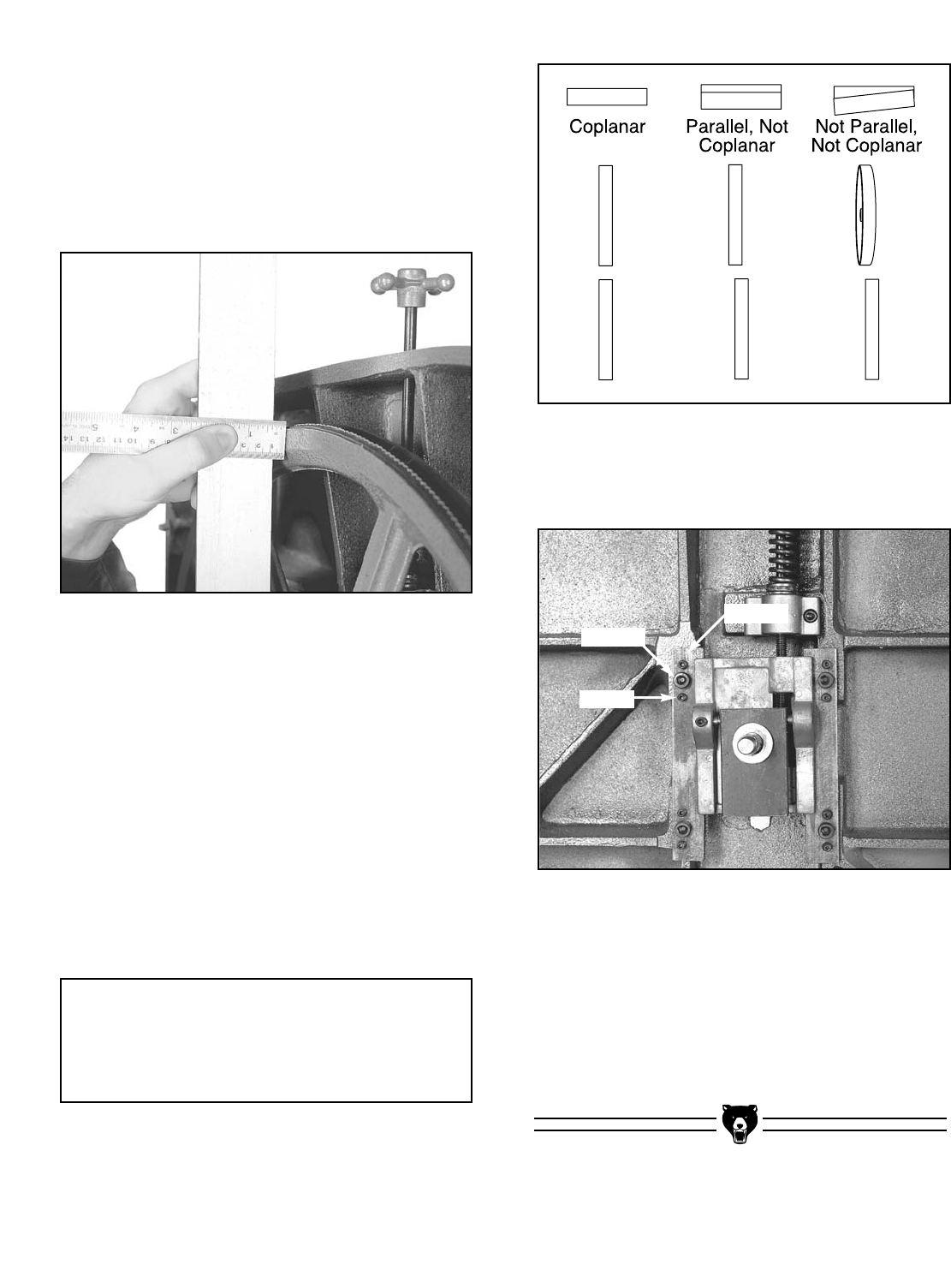
-26- G1073/G1073Z 16" Bandsaw
Figure 32. Horizontal controls for upper wheel.
2. Adjust the setscrews in or out very slightly
(over-adjustment will cause the tension rod
to bind). Use your straightedge from the pre-
vious section to make the upper wheel paral-
lel with the lower wheel.
3. Tighten the four cap screws and check wheel
alignment.
1. Loosen the four cap screws securing the two
sliding gibs to the body behind the upper
wheel, as shown in Figure 32.
Cap Screw
Setscrew
Figure 31. Coplanar diagram.
Adjusting Parallelism
To adjust a parallelism problem (i.e., if the middle
of the wheels are coplanar, but the sides are not,
Figure 31.) follow these steps.
Sliding Gib
Figure 30. Measuring wheel difference.
3. Replace wheel, any remaining washers and
the securing nut. It is important to tighten the
blade as it will be used during operation
before you check the wheels for being
coplanar. In other words, it is possible that
the wheels may be coplanar with the blade
loose, then be pulled out of alignment when
it is tightened.
4. The first time you get the wheels coplanar it
is a good idea to place a mark on each
wheel where you held the straightedge. This
assures repeated accuracy every time you
adjust your wheels.
2. Remove the blade from the saw, then the
securing nut and washers from the wheel
that needs to be shimmed. Now remove the
wheel. Use the washers that were behind
the securing nut for shims. Measure how
many you will need to equal the space of
your gap and place them on the mounting
shaft.
NOTICE
When wheels are properly coplanar, the blade
may not be centered on the crown of the wheel,
but it will be balanced.




